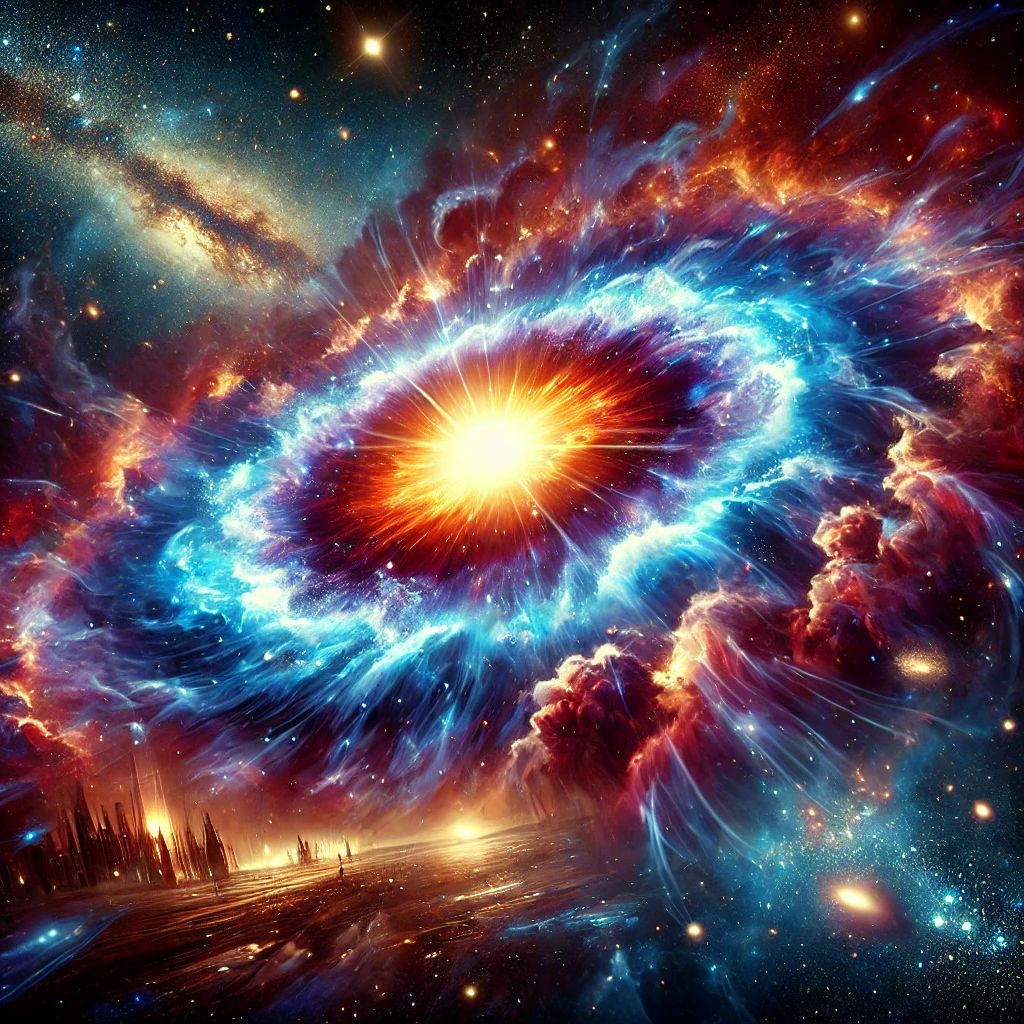1. Introduction
The Big Bang Theory is the leading explanation of how the universe began. It suggests that the universe started as a tiny, infinitely hot, and dense point around 13.8 billion years ago and has been expanding ever since. This theory helps us understand cosmic evolution, the formation of galaxies, and the fundamental laws of physics. In this blog, we will explore the origins, scientific evidence, stages, and impact of the Big Bang Theory on modern science.

What is the Big Bang Theory?
The Big Bang Theory proposes that the universe had a definite beginning and has been continuously expanding. Unlike an explosion in space, it was the expansion of space itself from a singularity. This expansion led to the formation of galaxies, stars, and planets over billions of years. Scientists use telescopes and mathematical models to study the early universe and confirm this theory.
Historical Background
- Ancient Beliefs: Many ancient cultures believed in a static, unchanging universe.
- Einstein’s Theory of Relativity (1915): Suggested that the universe could be expanding or contracting.
- Hubble’s Discovery (1929): Edwin Hubble observed that galaxies are moving away from us, proving cosmic expansion and supporting the Big Bang Theory.
- Cosmic Microwave Background Radiation (CMBR) (1964): Discovered by Arno Penzias and Robert Wilson, this radiation serves as a “fingerprint” of the early universe.
Scientific Evidence Supporting the Big Bang Theory
- Cosmic Microwave Background Radiation (CMBR): Leftover heat from the early universe, detected in all directions.
- Redshift and Expanding Universe: The farther away a galaxy is, the faster it moves away, proving the universe is expanding.
- Abundance of Light Elements: The presence of hydrogen, helium, and lithium in the universe aligns with predictions from the Big Bang Theory.
Stages of the Big Bang Theory
- Planck Epoch (Time Zero to 10⁻⁴³ seconds): The universe was infinitely hot and dense, with no known physical laws applying.
- Inflationary Period: The universe expanded exponentially within a fraction of a second.
- Nucleosynthesis: The first atomic nuclei formed, creating hydrogen and helium.
- Formation of Cosmic Structures: Gravity pulled matter together to form galaxies, stars, and planets over billions of years.
Common Misconceptions About the Big Bang Theory
- The Big Bang Theory is not an explosion; it is an expansion of space itself.
- The theory does not explain what came before the Big Bang.
- The Big Bang Theory does not contradict religious beliefs but is purely a scientific model.
The Big Bang Theory vs. Alternative Theories
- Steady-State Theory: Suggests the universe has always existed and continues to expand.
- Multiverse Hypothesis: Proposes that our universe is one of many existing universes.
- Oscillating Universe Theory: Suggests that the universe expands and contracts in cycles.
Impact of the Big Bang Theory on Modern Science
- Helped in understanding cosmic evolution and the formation of galaxies.
- Provided a foundation for studying dark matter and dark energy.
- Inspired advanced telescopes like the James Webb Space Telescope (JWST) to explore the early universe.
Future Research and Unanswered Questions
- What existed before the Big Bang Theory?
- The role of dark matter and dark energy in cosmic expansion.
- Upcoming scientific missions to test and refine the Big Bang Theory.
FAQs About the Big Bang Theory
Q1: What caused the Big Bang?
Scientists are still uncertain about what triggered the Big Bang Theory. Some hypotheses suggest quantum fluctuations or multiverse interactions, but there is no definitive answer yet.
Q2: What existed before the Big Bang?
The Big Bang Theory does not explain what came before it. Some theories suggest that time and space did not exist before the Big Bang, making this question difficult to answer.
Q3: Will the universe keep expanding forever?
Current observations suggest that the universe will continue expanding due to dark energy, but alternative theories suggest it could slow down or even collapse in a “Big Crunch.”
Q4: How do scientists study the Big Bang Theory?
Scientists use telescopes like the James Webb Space Telescope (JWST) and particle accelerators like the Large Hadron Collider (LHC) to study the early universe and its fundamental particles.
Q5: Is the Big Bang Theory proven?
While the Big Bang Theory has strong scientific evidence, it is still a theory and subject to refinement as new discoveries are made.
Additional Sections to Improve SEO & Engagement
🔹 Related Topics & Internal Links
- “How the Universe Will End: Theories of Cosmic Fate”
- “Exploring Dark Matter: The Invisible Force of the Universe”
- “The Role of James Webb Space Telescope in Understanding the Early Universe”
🔹 External Links for Authority
- NASA’s Big Bang Overview: https://www.nasa.gov/
- European Space Agency (ESA) Cosmology Page: https://www.esa.int/
🔹 Call to Action
💬 What do you think about the Big Bang Theory? Do you believe the universe had a definite beginning, or do you support an alternative theory? Share your thoughts in the comments!
Conclusion
The Big Bang Theory is the best scientific model for explaining the origin of the universe. It is supported by strong evidence, including CMBR, redshift, and light element abundance. However, many mysteries remain, such as what came before the Big Bang and the role of dark matter and dark energy. As scientific research progresses, we may one day uncover the full story of the universe’s creation and fate.